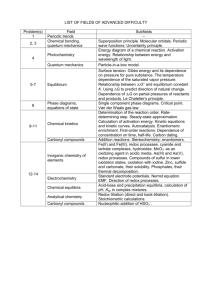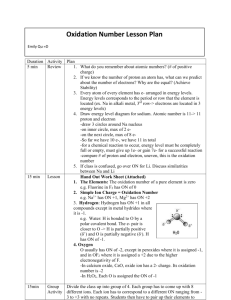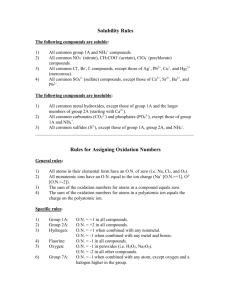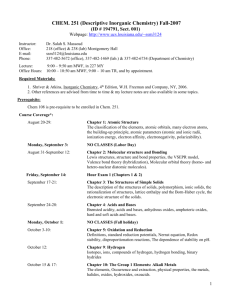Formulas and Names of Compounds
advertisement
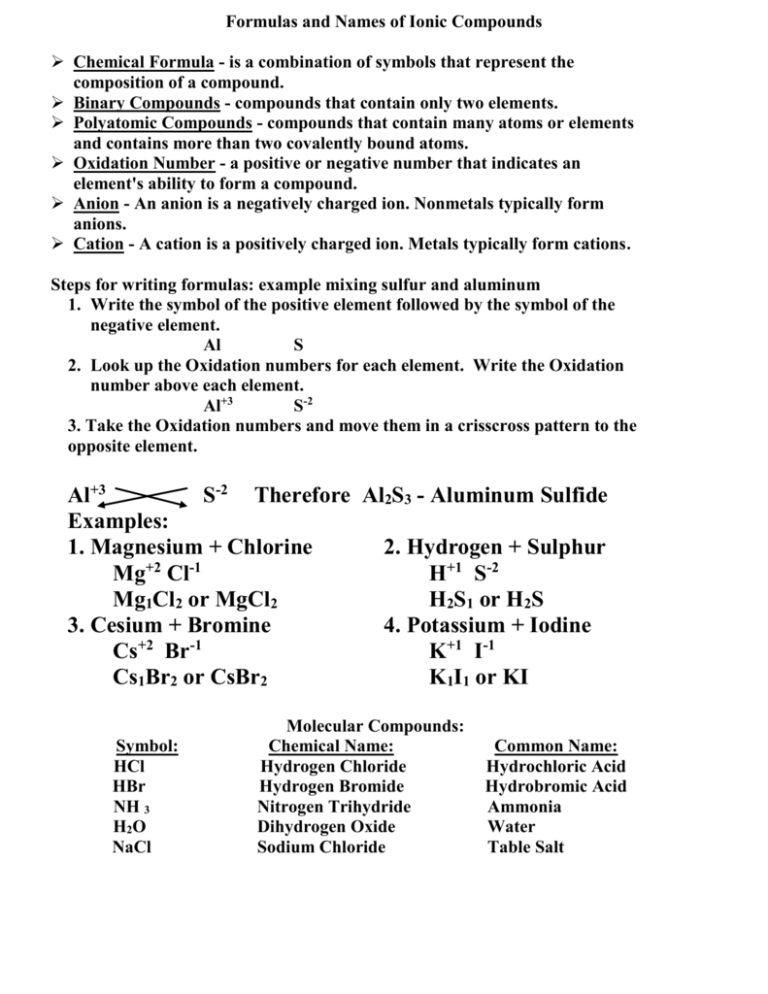
Formulas and Names of Ionic Compounds Chemical Formula - is a combination of symbols that represent the composition of a compound. Binary Compounds - compounds that contain only two elements. Polyatomic Compounds - compounds that contain many atoms or elements and contains more than two covalently bound atoms. Oxidation Number - a positive or negative number that indicates an element's ability to form a compound. Anion - An anion is a negatively charged ion. Nonmetals typically form anions. Cation - A cation is a positively charged ion. Metals typically form cations. Steps for writing formulas: example mixing sulfur and aluminum 1. Write the symbol of the positive element followed by the symbol of the negative element. Al S 2. Look up the Oxidation numbers for each element. Write the Oxidation number above each element. Al+3 S-2 3. Take the Oxidation numbers and move them in a crisscross pattern to the opposite element. Al+3 S-2 Therefore Al2S3 - Aluminum Sulfide Examples: 1. Magnesium + Chlorine 2. Hydrogen + Sulphur Mg+2 Cl-1 H+1 S-2 Mg1Cl2 or MgCl2 H2S1 or H2S 3. Cesium + Bromine 4. Potassium + Iodine +2 -1 Cs Br K+1 I-1 Cs1Br2 or CsBr2 K1I1 or KI Symbol: HCl HBr NH 3 H2O NaCl Molecular Compounds: Chemical Name: Hydrogen Chloride Hydrogen Bromide Nitrogen Trihydride Dihydrogen Oxide Sodium Chloride Common Name: Hydrochloric Acid Hydrobromic Acid Ammonia Water Table Salt Naming Binary Compounds using the Chemical Name (IUPAC) International Union of Pure and Applied Chemistry - Latin and Greek stems are used to represent the elements with a universal meaning. Prefix: Number of Atoms: MonoOne (1) Di Two (2) Tri Three (3) Tetra Four (4) Penta Five (5) Hexa Six (6) Hepta Seven (7) Octa Eight (8) Nona Nine (9) Deca Ten (10) Suffix ending: When you have a binary compound, the suffix ending ends in "ide". One Important Rule: The prefix "Mono" may be omitted for the first element. The absence of a prefix for the first element usually implies that there is only one atom of that element present in the molecule. Types of Compounds Organic compounds contain carbon with either H, N, O, or S. Inorganic compounds are generally placed in 4 classes: Ionic, Molecular, Acids and Bases, & Hydrates. One class of such a hydroxyl (OH) group acid is the oxoacids, in which the acid proton is on a hydroxyl group with an oxo group attached to the same atom. Oxoacids are found where the central atom has a high oxidation number. We may consider two types of oxoacids: 1) Simple oxoacids contain one atom of the parent element. Sulfuric acid, H2SO4, is an example of an oxoacid. Other examples include H2CO3, HNO3, and H3PO4. These types of oxoacids are formed by the electronegative element at the upper right of the periodic table and by other elements with high oxidation numbers. 2) Substituted oxoacids occur when one or more hydroxyl groups of the oxoacids are replaced by other groups, to give a series of substituted oxoacids. These include fluorosulfuric acid, O2SF(OH), and aminosulfuric acid, O2S(NH2)OH. Exception: With acids involving sulfur, like hydrogen sulfate, add a ur- before the suffix. Examples: a) HNO3 - nitric acid b) HNO2 - nitrous acid c) H2SO4 - sulfuric acid Examples: ClO- hypochlorite ion HClO hypochlorous acid ClO2- chlorite ion HClO2 chlorous acid ClO3- chlorate ion HClO3 chloric acid ClO4- perchlorate ion HClO4 perchloric acid Hydrates are a compound that incorporates water molecules into its fundamental solid structure. In a hydrate (which usually has a specific crystalline form), a defined number of water molecules are associated with each formula unit of the primary material. In gypsum, two water molecules are present for every formula unit of CaSO4 in the solid; the chemical name of gypsum is calcium sulfate dihydrate: CaSO4·2H2O(s) Note that the dot, or multiplication sign, indicates that the waters are there. A few other examples are barium chloride dihydrate - BaCl2·2H2O, lithium perchlorate trihydrate - LiClO4 ·3H2O, and magnesium carbonate pentahydrate - MgCO3 ·5H2O.

